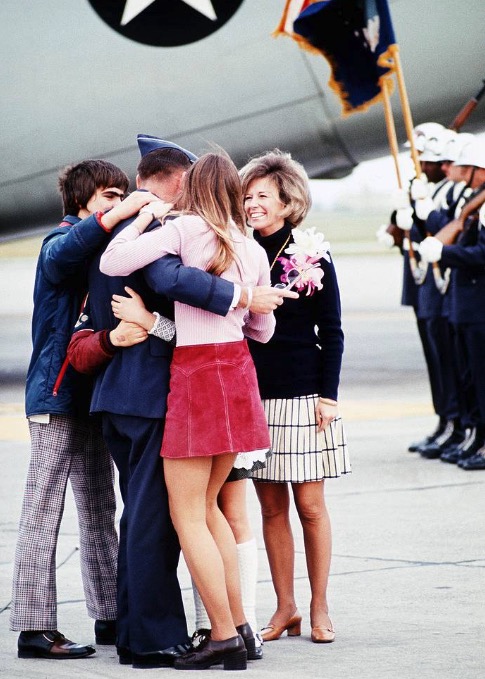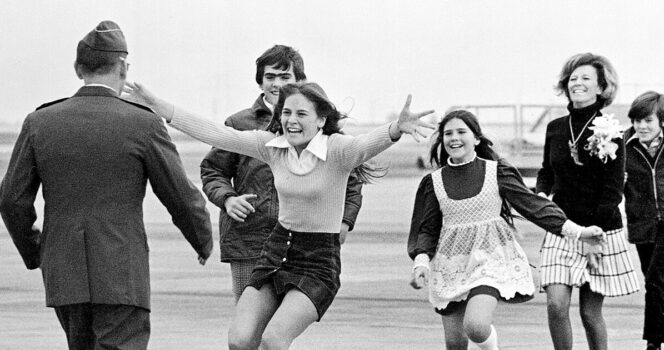In 1973, an unforgettable image captured an emotional family reunion between an American prisoner of war and his loved ones. Known as “Burst of Joy,” the photograph became an iconic symbol of hope and was awarded the Pulitzer Prize in 1974. Taken at Travis Air Force Base in California, it shows Lt. Col. Robert L. Stirm being greeted by his family after spending nearly six years as a prisoner of war in Vietnam.
However, while the photograph radiates happiness, the reality behind it is far more complicated and heartbreaking than it appears.
Historical Context and Significance
The Vietnam War left deep scars on both the battlefield and the home front. By 1973, the conflict had been raging for over a decade, and the return of American POWs was a rare and highly emotional event. Lt. Col. Robert L. Stirm had been shot down over Hanoi in 1967 and endured nearly 2,000 days in captivity. His family, like many others, had spent years fearing the worst.
On March 17, 1973, during Operation Homecoming—a mission that repatriated 591 American POWs—the Stirm family experienced a moment of joy that was immortalized by photographer Slava “Sal” Veder.

Impact of the Photo and Life After
The “Burst of Joy” photo quickly gained national recognition, becoming a symbol of healing and reunion. However, for Lt. Col. Stirm, the moment it captured was not a happy memory.
Within a year of his return, Robert and Loretta divorced. Despite her infidelity, Loretta was awarded 43% of his military pension. Stirm continued his military career and retired as a colonel in 1977. For years, he refused to display the famous photograph in his home, as it reminded him of his personal loss.

The Lasting Legacy of “Burst of Joy”
Although the image remains a powerful piece of history, its true significance lies beyond what was captured on film. The children in the photo—Lorrie, Robert Jr., Cynthia, and Roger—each had different recollections of the moment. While some cherished it, others felt distant from it.
Despite his personal struggles, Stirm’s children continue to appreciate the photo as a meaningful reminder of their father’s return. Today, “Burst of Joy” serves as a symbol of resilience, but also as a reminder that even the most powerful images may hide untold stories of hardship and emotional complexity.


